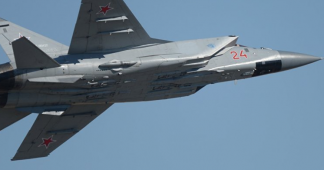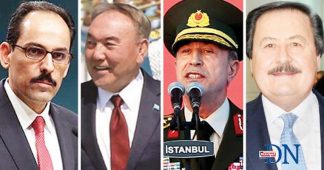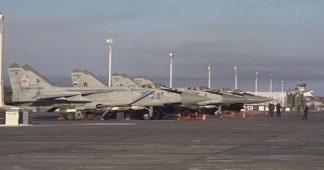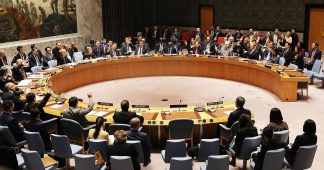By Ben Aris
September 22, 2018
Looking over Russia’s capital flight data, you could be driven to tears. Since 1994, when the Central Bank of Russia (CBR) started publishing capital flight data, a total of $581bn has left Russia as private sector outflows.
But what really makes the eyes water is that in the last decade and half there were only two years, 2006 and 2007, when there was a net inflow of capital. Those years were the height of Russia’s boom when Russian businessmen finally became optimistic about the future of the country: the $131bn that came home in those two years was only slightly less than the total of all the money that had left in the preceding decade, $156bn.
If the US crash had not started a global panic, if Russia had had a few more years of this level of inflows, then it is likely the changes would have gathered enough momentum to transform the country and bring it up to par with the developed world.
But the US did crash. Russia didn’t have very long in the sun. In 2008 a massive $133bn left — the same amount as all the money that had arrived in the previous golden years — and not only did the optimism evaporate, but one can imagine that those Russian investors foolhardy enough to bring their cash home have been scarred for life. In the following years between 2009 and the second quarter of this year, a total of $539bn has left the country, which includes an eye watering spike that was even bigger than the 2008 crash: $152bn fled in 2014 following Russia’s annexation of the Crimea that year. Capital flight has petered off in the last two years, but some $20bn is still leaving every year.
The challenge that President Vladimir Putin faces now is to recreate the atmosphere of optimism that prevailed from 2006-2007 so that his own businessmen want to bring their money home from its offshore havens and invest in Russia. The Kremlin is now trying the stick and carrot approach with Putin’s deoffshorisation laws vs things like a tax amnesty for returning flight capital. He has not convinced anyone yet. Russia doesn’t look stable enough. US sanctions are not going away. And the economy is effectively stagnating. As I have argued elsewhere, Russia is suffering from a crisis of confidence.
Some of the ideas the Kremlin has been throwing around recently – such as presidential advisor Andrei Belousov’s “super tax” suggestion – suggest the Kremlin will simply force the oligarchs to invest. In a meeting with Belousov in August the collected captains of industry agreed to invest $4.5bn, but that is a drop in the bucket compared to the $131bn that came by itself in the boom years. And that was ten years ago; if there was a another boom presumably the amount of returning flight capital could be multiple times higher.
Bloomberg ran a story this week entitled “US Sanctions Driving Russian billionaires Into Putin’s Arms” claiming that Russia’s top businessmen were moving their money back to the motherland. But the piece turned out to be controversial. Tim Ash, senior sovereign strategist at BlueBay Asset Management, said in an email to clients: “The data just does not show this. Look at private sector capital flow data from the CBR. It’s shows the opposite, private sector flight capital increasing, if anything.”
CBR data shows that private capital outflows from Russia have fallen over the last year from $17.4bn for 1H18 versus $14.4bn in the same period one year earlier. This is according to data captured by the CBR on the balance of payments method of calculation and clearly the CBR does not see all the money flowing in and out of Russia. However, as its clean up of the banking sector continues one of the main goals has been to close down the “money chute” used by businessmen to whisk their earnings offshore undetected by the authorities. According to the central bank the amount of this money laundering has been massively reduced in the last few years.
It is very hard to get a clear picture of what is happening within the details of the capital flows. Certainly Putin’s deoffshorisation campaign has encouraged some oligarchs to bring their money home. In an interview with bne IntelliNews two years ago when the campaign was at its height Dmitri Mints, the CEO of the O1 real estate company, said he had seen hundreds of millions of offshore oligarch money flow into high-end Moscow real estate in the previous year.
But at the same time there are oligarchs that are more scared of a Kremlin appropriation than US sanctions and are sending money out in large amounts.
| Russia capital flight (BoP $bn) | |
|
1994 |
12.7 |
|
1995 |
7.8 |
|
1996 |
22.4 |
|
1997 |
18.4 |
|
1998 |
22.6 |
|
1999 |
19.6 |
|
2000 |
23.1 |
|
2001 |
13.6 |
|
2002 |
7 |
|
2003 |
0.3 |
|
2004 |
8.6 |
|
2005 |
0.3 |
|
2006 |
-43.7 |
|
2007 |
-87.8 |
|
2008 |
133.6 |
|
2009 |
57.5 |
|
2010 |
30.8 |
|
2011 |
81.4 |
|
2012 |
53.9 |
|
2013 |
60.3 |
|
2014 |
152.1 |
|
2015 |
57.1 |
|
2016 |
18.5 |
|
2017 |
27.3 |
|
1Q18 |
17 |
|
2Q18 |
0.4 |
| Source: CBR | |
Published at http://www.intellinews.com/moscow-blog-capital-flight-figures-to-make-your-eyes-water-148974/











